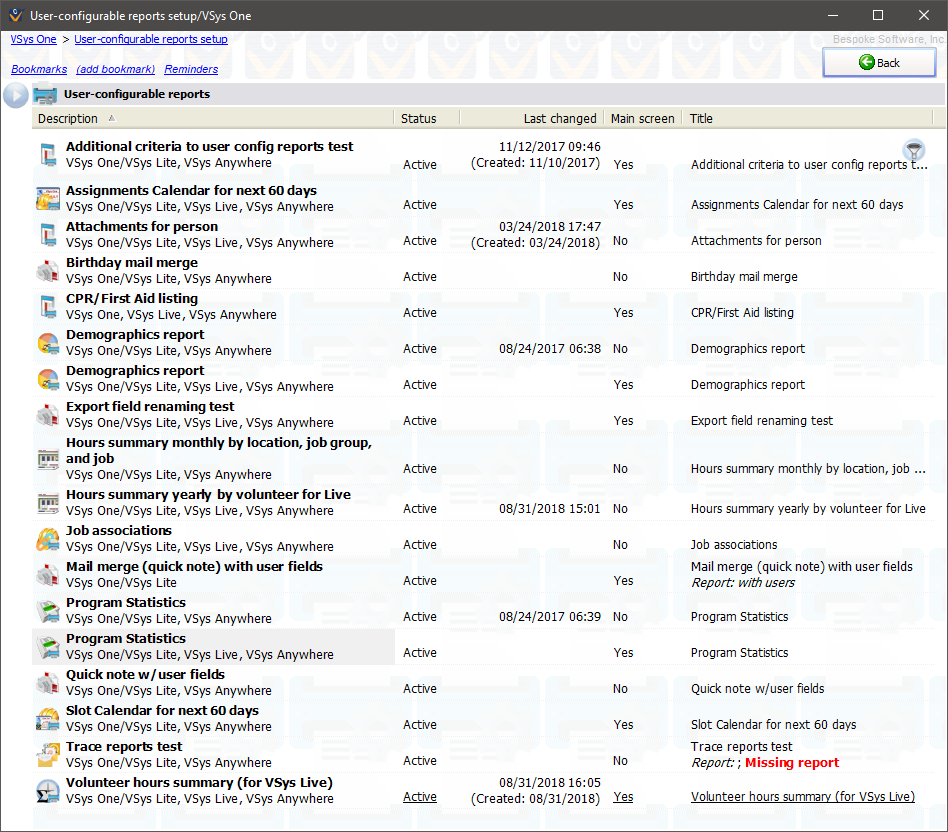User-configurable reports take saved reports of many types and configure them with an optional list of user settings to make a simplified icon for your users. Why would you do this?
Create user-configurable reports from the User-configurable reports tool from the Setup panel.
Each report here represents a link to a saved report.
Column |
Description |
User-configurable report |
This is the description of the report as it will be displayed to your users. |
Status |
Active or Inactive. An inactive report will not be available to your users. |
Report groupings |
Zero or more groupings for this report. The groupings are tied to security and define how users get rights to the report. |
Main screen |
If Yes, this report will show on the User-configurable reports panel on the VSys One home screen. |
Title |
When the report is printed, this title will override the title saved with the report itself. |
Report |
This is the saved report that the user-configurable report is linked to. A user-configurable report that cannot locate its saved report (the saved report could have been deleted) will show in gray and cannot be used. |
On the right-click menu
Add user-configurable report |
Creates a new user-configurable report. |
View, Edit |
Opens the user-configurable report's definition for viewing or editing. |
Make inactive, Make active |
Disables or enables this user-configurable report. (Note that this does not affect the underlying saved report.) |
Delete |
Deletes the user-configurable report. (Note that this does not affect the underlying saved report.) |
Open report |
Opens the underlying report so that you can modify it. |
Show on main VSys One screen |
A report shown on the main VSys One screen shows under User-configurable reports and is very easy to access. |
Test |
Opens the user-configurable report so that you see it and can test it the same way your users will. |
See tracked changes |
Shows who's made changes to this user-configurable report and when. |
A single saved report can be linked to multiple user-configurable reports. Why would you do this? To give different people access to different versions of the same underlying report.